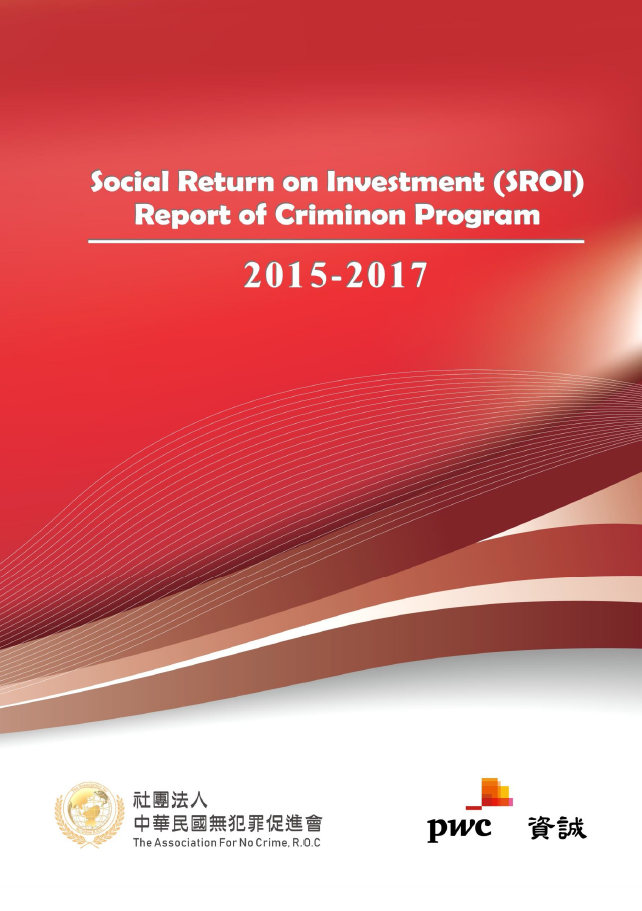Reports Database:
Social Return on Investment Report of Criminon Project

The Association for No Crime, R.O.C. was established in 2009 with the purpose “to bring together different sectors and personages in promoting drug rehab education, promoting learning technologies, assisting with crime prevention, and correcting the values of criminals, so as to elevate the character of citizens, reduce crime, and promote a harmonious society.” The association mainly provides Criminon Program to prison inmates, and uses course arrangements to sequentially help each inmate face difficulties in their past, present, and future. This way, inmates have ways to handle obstacles they encounter in life, and to regain and rebuild their self-respect, so that they become capable citizens when they return to society in the future.
We further adopted a commonly used methodology for evaluating social impact, Social Return On Investment (SROI), in 2017, to examine the results and effects of Criminon Program more comprehensively and in-depth, which examinations then provide a basis for future program planning and improvement. This program analyzes students that received training in Tainan, Pingtung, and Changhua Prisons from 2015 to 2017. We identified a number of rich outcomes after in-depth interviews and questionnaire surveys of stakeholders, such as: Students that took the programs gained better reading abilities, and the content of the courses helped them improve their relationships with their families and also increased their senses of identity. More importantly, students were less likely to become repeat offenders, resulting in a lower recidivism rate. Instructors were inspired by the positive changes among students, and they gained higher learning motivation, making them willing to engage in lifelong learning with related courses, and even pursue further education to have a greater impact on students.
We compiled a list of abstract outcomes and determined their monetized value. On this basis, we calculated that every NT$1 input by this program will generate NT$6.30 in social value. If uncertain factors are taken into consideration for sensitivity analysis, the result will be in the range NT$4.38-11.73. We used findings from statistics of outcomes and observations during implementation of the SROI project as a basis for improving the program. For example, we considered how to achieve the purpose and effect of project management by having students who were released share their experiences, adjusting the student recruitment structure, encouraging students to continue reading and learning after class, and strengthening contact with students after program. We hope to more effectively allocate and manage our limited resources, and also increase the social value generated by the Criminon Program.
